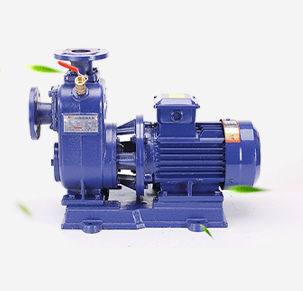English
- Afrikaans
- Albanian
- Amharic
- Arabic
- Armenian
- Azerbaijani
- Basque
- Belarusian
- Bengali
- Bosnian
- Bulgarian
- Catalan
- Cebuano
- Corsican
- Croatian
- Czech
- Danish
- Dutch
- English
- Esperanto
- Estonian
- Finnish
- French
- Frisian
- Galician
- Georgian
- German
- Greek
- Gujarati
- Haitian Creole
- hausa
- hawaiian
- Hebrew
- Hindi
- Miao
- Hungarian
- Icelandic
- igbo
- Indonesian
- irish
- Italian
- Japanese
- Javanese
- Kannada
- kazakh
- Khmer
- Rwandese
- Korean
- Kurdish
- Kyrgyz
- Lao
- Latin
- Latvian
- Lithuanian
- Luxembourgish
- Macedonian
- Malgashi
- Malay
- Malayalam
- Maltese
- Maori
- Marathi
- Mongolian
- Myanmar
- Nepali
- Norwegian
- Norwegian
- Occitan
- Pashto
- Persian
- Polish
- Portuguese
- Punjabi
- Romanian
- Russian
- Samoan
- Scottish Gaelic
- Serbian
- Sesotho
- Shona
- Sindhi
- Sinhala
- Slovak
- Slovenian
- Somali
- Spanish
- Sundanese
- Swahili
- Swedish
- Tagalog
- Tajik
- Tamil
- Tatar
- Telugu
- Thai
- Turkish
- Turkmen
- Ukrainian
- Urdu
- Uighur
- Uzbek
- Vietnamese
- Welsh
- Bantu
- Yiddish
- Yoruba
- Zulu
Telephone: +86 13120555503
Email: frank@cypump.com
Dec . 02, 2024 00:47 Back to list
submersible septic tank pump
Understanding Submersible Septic Tank Pumps
When it comes to managing wastewater effectively, homeowners often face the challenge of maintaining a septic system. One crucial component of a septic system is the septic tank pump, particularly the submersible type. These pumps play a vital role in ensuring that wastewater is transported efficiently from the tank to the drain field or municipal sewage system. In this article, we will explore what submersible septic tank pumps are, how they work, and their advantages and considerations.
What is a Submersible Septic Tank Pump?
A submersible septic tank pump is designed to operate underwater within the septic system. Unlike other types of pumps that may need to be situated above ground, submersible pumps are submerged in the liquid they manage. They are typically encased in a robust housing that protects them from waste materials and corrosive substances. This design allows for a more efficient pumping process, especially in systems where the elevation from the tank to the drain field is significant.
How Do Submersible Septic Tank Pumps Work?
Submersible pumps utilize an electric motor that powers an impeller. When activated, the impeller spins rapidly, creating a centrifugal force that pushes the wastewater out of the tank and into the drain pipes. The submersible design is advantageous because it reduces the need for priming and allows for direct installation underwater, which minimizes the risk of clogging and other common issues associated with above-ground pumps.
The operation of a submersible pump is typically managed by a float switch that responds to the water level in the septic tank. When the water reaches a certain height, the float switch activates the pump, which continues to operate until the water level drops to a predetermined point. This automatic operation makes submersible septic tank pumps highly efficient and user-friendly.
Advantages of Submersible Septic Tank Pumps
1. Efficiency Submersible pumps are typically more energy-efficient than their above-ground counterparts. They can handle larger volumes of wastewater, making them ideal for larger properties or homes with high water usage.
submersible septic tank pump

2. Space-Saving Design Because these pumps are installed inside the septic tank, they do not require additional space above ground, allowing for better use of property and reducing aesthetic concerns.
3. Durability Designed to withstand harsh conditions, submersible pumps are often made from corrosion-resistant materials, extending their lifespan with proper maintenance.
4. Noise Reduction Since the pump operates submerged in the tank, it operates quietly, reducing noise pollution commonly associated with traditional external pumps.
Considerations When Using Submersible Septic Tank Pumps
While submersible septic tank pumps offer numerous benefits, there are several considerations to keep in mind. Proper installation is crucial—if not installed correctly, the pump may fail or underperform. Regular maintenance is also essential, as debris and sediment can accumulate, impacting the pump's efficiency. Homeowners should also be mindful of what they flush down their toilets, as non-biodegradable items can lead to clogs and damage.
Additionally, while submersible pumps are generally durable, their reliance on electrical components means that power failures can lead to malfunction or backup. This necessitates having a backup power supply or alternative pumping solutions in place to ensure continuous operation during outages.
Conclusion
Submersible septic tank pumps are an excellent investment for anyone looking to manage their wastewater efficiently. With their ease of use, effectiveness, and space-saving design, they are a preferred choice in many residential settings. However, like any mechanical system, they require regular attention and care. Ensuring proper installation and maintenance will help keep your septic system functioning smoothly for years to come.
-
ISG Series Vertical Pipeline Pump - Chi Yuan Pumps Co., LTD.|Advanced Hydraulic Design&Energy-Efficient Solutions
NewsJul.30,2025
-
ISG Series Vertical Pipeline Pump - Chi Yuan Pumps Co., LTD.
NewsJul.30,2025
-
ISG Series Vertical Pipeline Pump - Chi Yuan Pumps Co., LTD.|energy-efficient fluid handling&industrial durability
NewsJul.30,2025
-
ISG Series Vertical Pipeline Pump - Chi Yuan Pumps | Advanced Engineering&Industrial Efficiency
NewsJul.30,2025
-
ISG Series Pipeline Pump - Chi Yuan Pumps | High Efficiency, Energy Saving
NewsJul.30,2025
-
ISG Series Vertical Pipeline Pump-Chi Yuan Pumps|High Efficiency&Reliable Performance
NewsJul.29,2025










